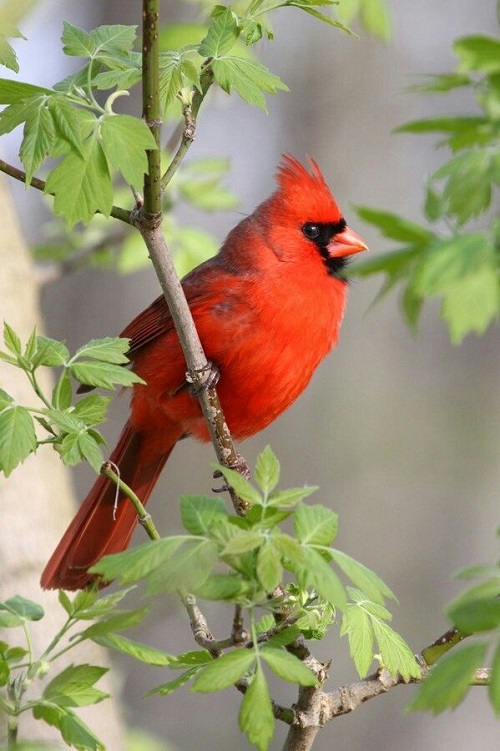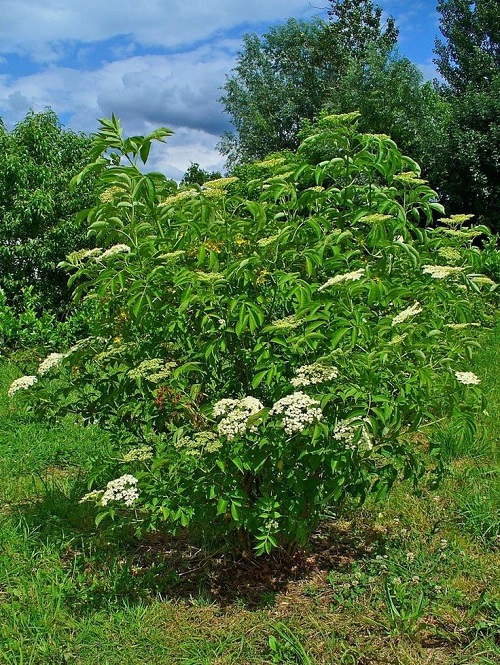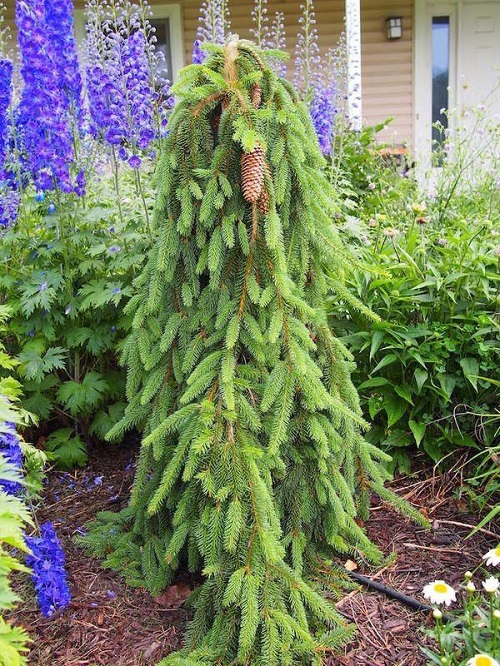Are you both a bird lover and a plant enthusiast? You should grow these Plants that Attract Cardinals for the best of both worlds!

Cardinals are thick-billed songbirds loved for their brilliant red and rust plumes and adorable appearance. But these feathered friends don’t just come to just any garden; only a few lucky ones draw them. Here are plants that attract cardinals to your backyard.
Plants that Attract Cardinals
1. Flowering Dogwood

Botanical Name: Cornus florida
USDA Zones: 5–9
Many dogwood species attract cardinals, but the flowering dogwood has the most cardinal birds perched on its branches. They flock in to feast on its bright red berries that emerge in the fall.
Growing up to 15-25 feet tall, these trees are heat tolerant once established and produce gorgeous golden yellow, white, and pink blooms in spring. This native medicinal plant thrives in dappled sunshine and slightly acidic to neutral, well-draining soil.
2. Sunflower

Botanical Name: Helianthus spp.
USDA Zones: 6–9
The sight of sweet-song cardinals with their plush, colorful plumage against golden-yellow sunflowers is the stuff of art! Cardinals are non-migratory birds, so they will likely hang around year-round if you have ample feed in your backyard.
And sunflowers are one such coveted food source that will keep cardinals coming back to your garden—especially black oil sunflower seeds. Sunflowers grow quite tall, thrive in ample sunshine and well-draining soil, and don’t just come in yellow!
3. Serviceberry

Botanical Name: Amelanchier spp.
USDA Zones: 4–9
Serviceberries are multi-stemmed shrubs that bloom just before dogwoods do and produce white blooms as winter wanes and spring begins. They produce edible berries that start green, turn burgundy, and end up blackish—these can be used for jams and jellies.
Or you could leave them for pretty cardinals to munch on! Its fragrant blooms also attract loads of insects, which wild birds then eat. They flower as soon as the ground starts to thaw, adding color through their eye-catching red-orange fall foliage.
4. Staghorn Sumac

Botanical Name: Rhus typhina
USDA Zones: 3–9
Staghorn sumac is a member of the cashew family that forms thickets due to its self-seeding or root-suckering habits. Cardinals love to feed on its bright red seeds—a significant part of the birds’ diet.
Along with hairy branches, staghorn suma sports pinnate leaves that turn a blazing shade of red in the fall.
5. Blueberry

Botanical Name: Vaccinium spp.
USDA Zones: 2–8
Cardinals aren’t all that picky when it comes to food; they love select natural fruits like blueberries just as much as we do. These sweet berries make a nutritious bird snack and contain carotenoids, which help male cardinals turn a richer red to attract mates!
While growing one yourself, choose acidic, well-draining soil and expose the plant to full sun for best results.
6. Elderberry

Botanical Name: Sambucus spp.
USDA Zones: 4–8
Native to the Americas, elderberry is a viburnum family member known to attract several wild birds, including cardinals. Its small, dark purple fruits are packed with nutrients and flavor.
These fast-growing shrubs are perfect for areas unfavorable for other plants, as they can survive in wet conditions. They are often spotted growing in streams, marshes, moist forests, and disturbed areas.
7. Eastern Red Cedar

Botanical Name: Juniperus virginiana
USDA Zones: 2–9
Eastern red cedars are massive coniferous trees native to North America. Many butterfly caterpillars make cocoons on these trees, which birds munch on.
The tree also produces berry-like cones, a vital winter food source for cardinals. You can grow it in most conditions, but it’ll flourish in average, dry to moist, well-draining soils and full sun.
8. Holly

Botanical Name: Ilex spp.
USDA Zones: 5–9
Growing abundantly in almost all continents except Antarctica, holly plants are an essential food source for cardinals. The birds eat their red berries, which appear from fall through winter, and provide food during the chilly months.
This plant that attracts cardinals is perfect for novice gardeners as it tolerates almost everything. It can survive in full to partial sun, multiple types of soil conditions, regions of high air pollution, and drought-like environments.
9. Norway Spruce

Botanical Name: Picea abies
USDA Zones: 2–7
Cardinals often perch upon Norway spruce trees, seeking shelter among their dense evergreen branches and also for food. You can also find other songbirds, moths, and small mammals on this woody tree.
This species of spruce hates heat, wet feet, and hot, dry summers. It is best suited for cooler climes and won’t survive in zones seven and above.


